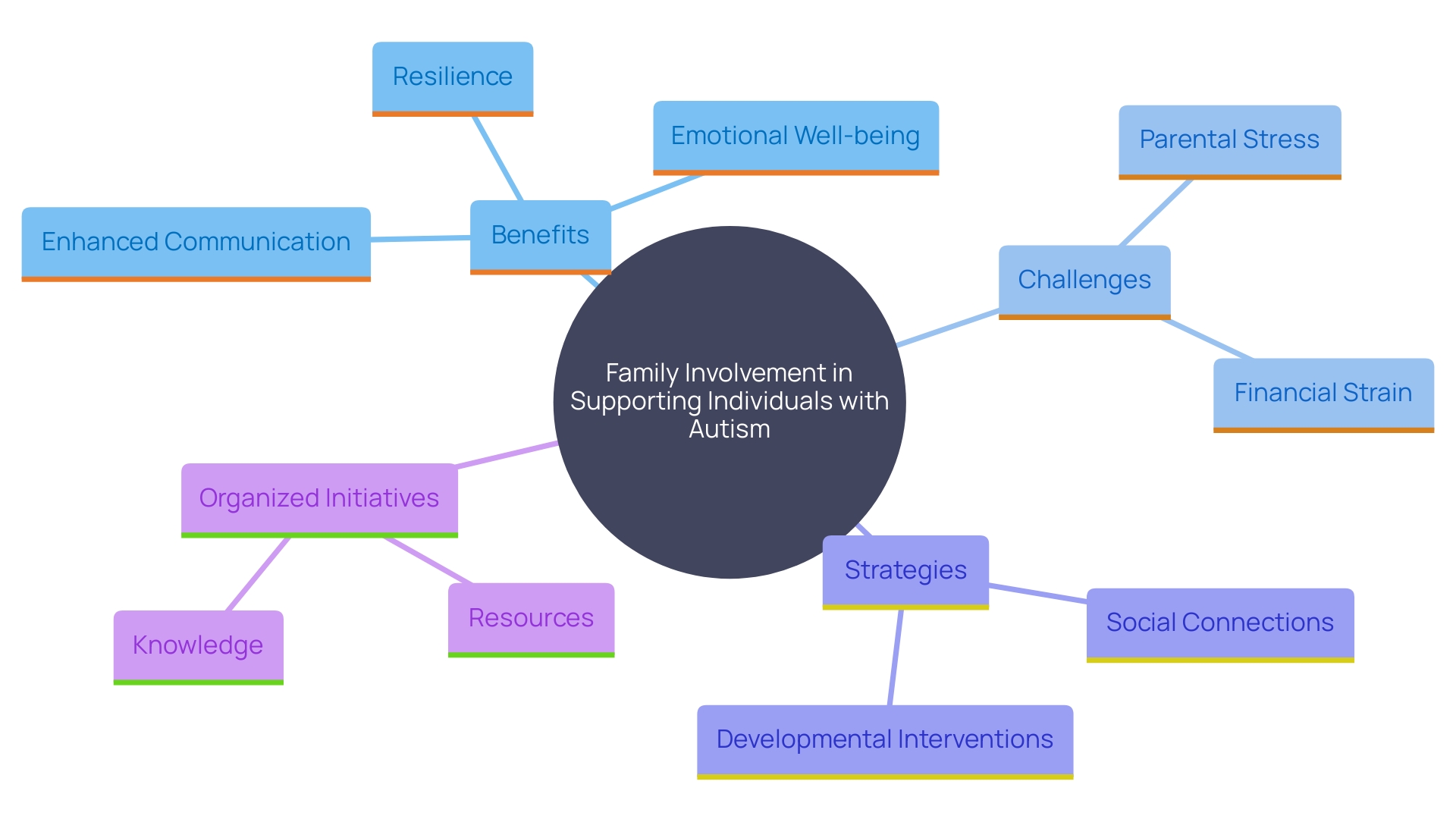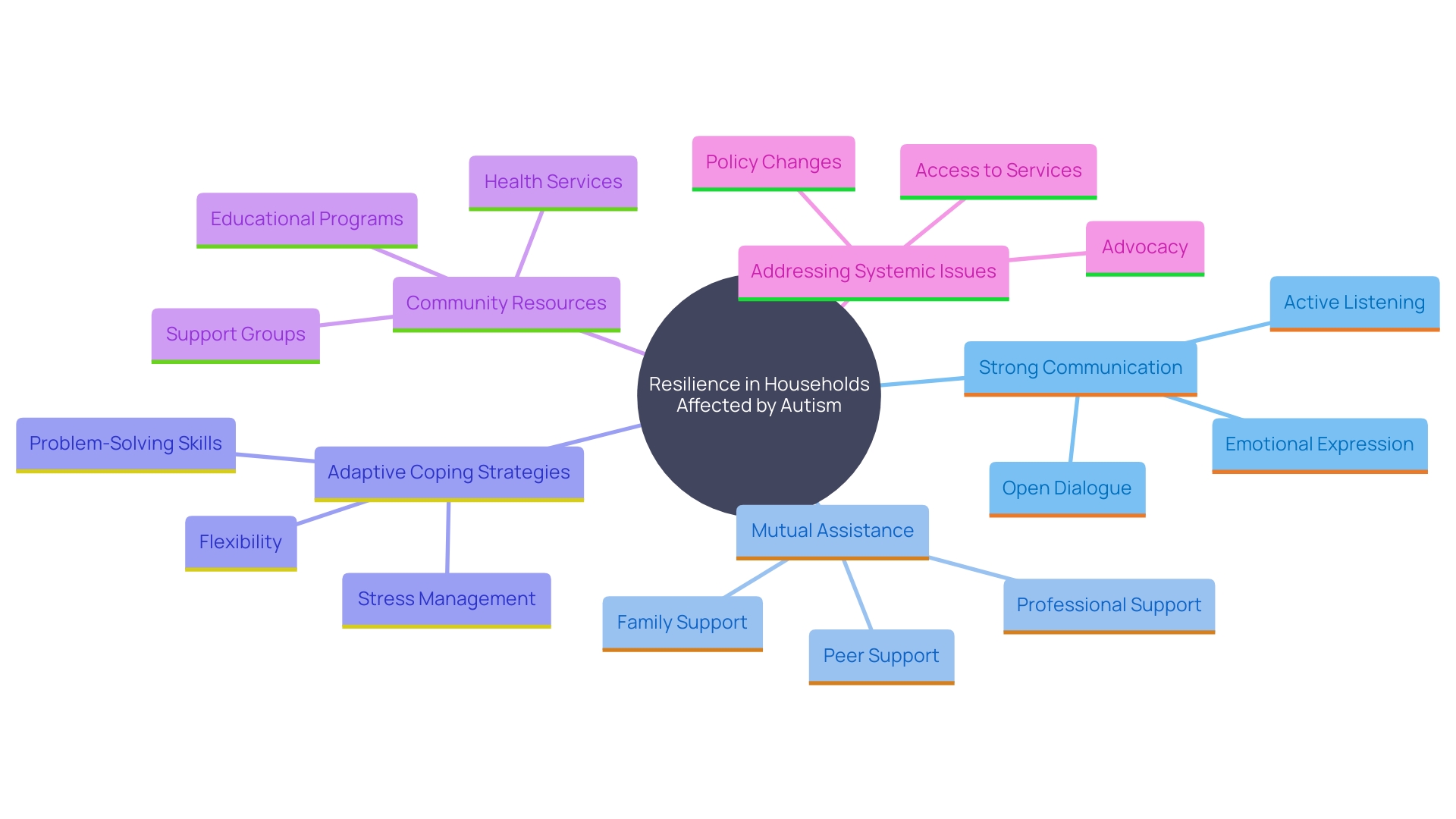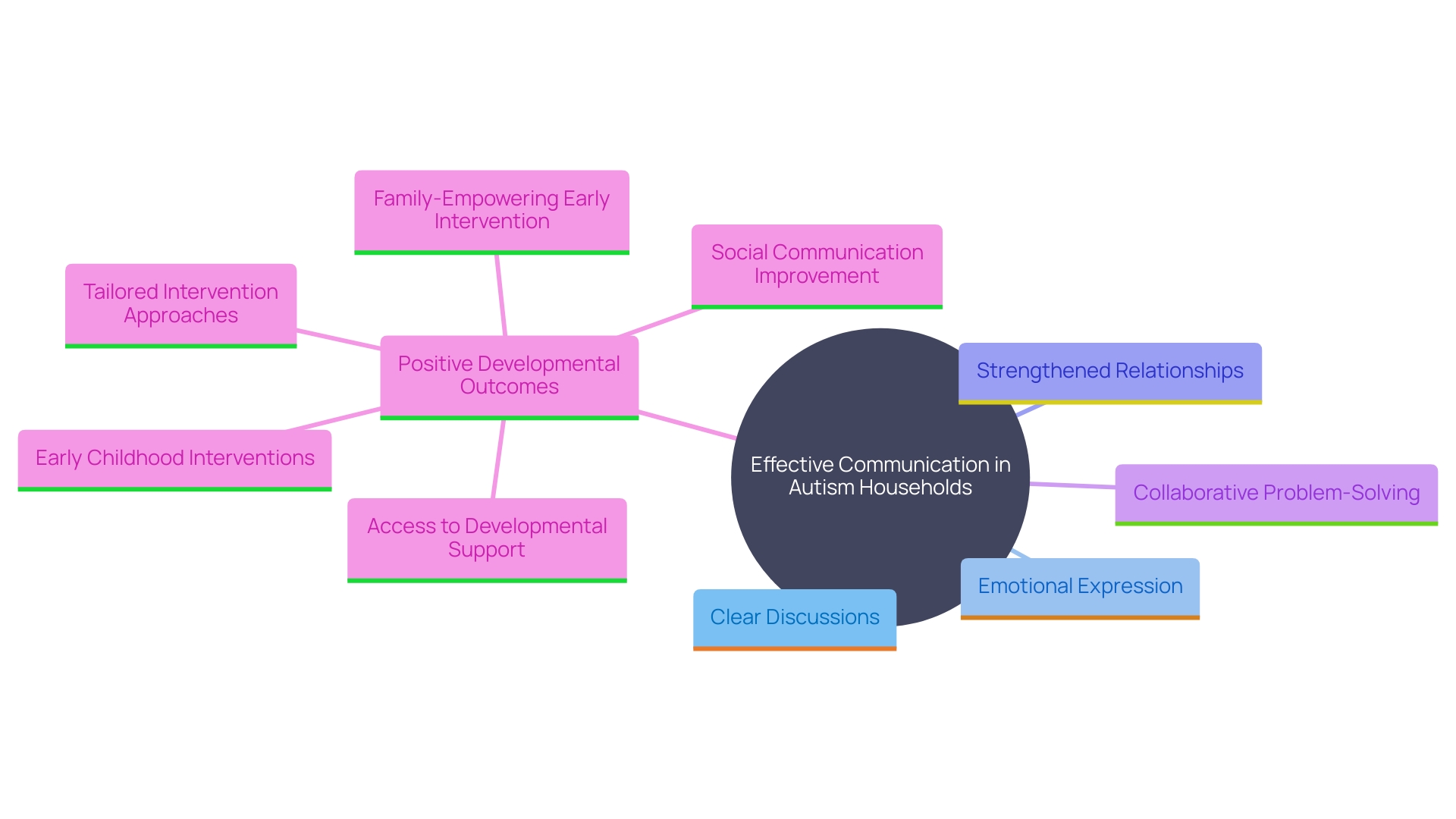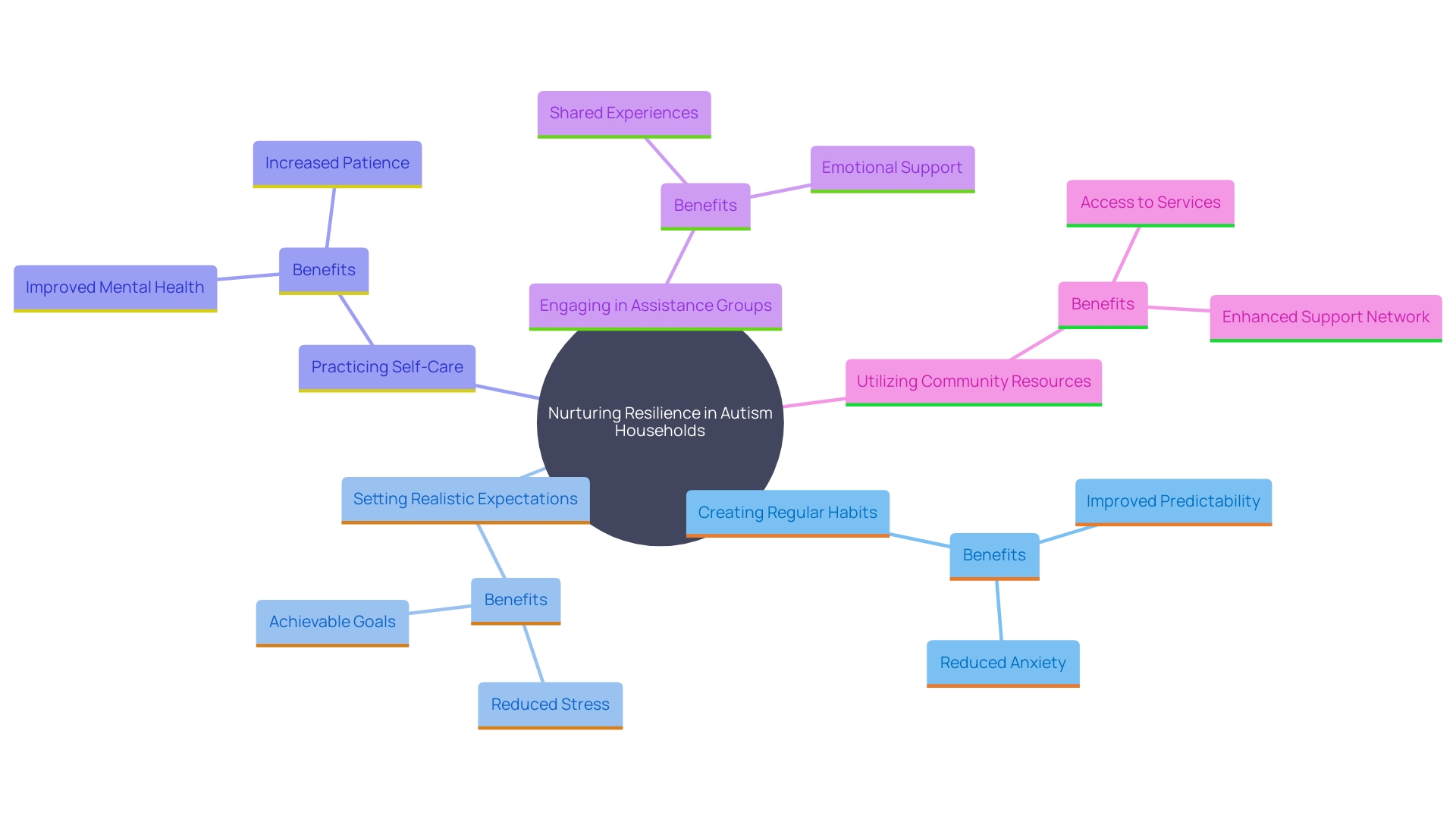Introduction
Navigating the complexities of Autism Spectrum Disorder (ASD) requires the unwavering support and active involvement of families. This article delves into the critical role that family participation plays in fostering a nurturing and stable environment for individuals with autism. It explores the challenges families face, from parental stress and financial strain to the anxiety surrounding their child's future, and offers evidence-based strategies to alleviate these burdens.
Highlighting the importance of social support, peer networks, and developmental interventions, the article provides valuable insights into building resilience and strengthening family bonds through effective communication and shared responsibilities. Additionally, it underscores the significance of community resources and professional support, emphasizing the transformative impact of coordinated efforts like research initiatives tailored to the needs of autism families.
The Importance of Family Involvement in Autism Support
Family involvement is vital in supporting individuals with autism, as it fosters a consistent and nurturing environment that significantly contributes to learning and growth. Families often face specific demands due to the complexity of Autism Spectrum Disorder (ASD), which requires substantial time, energy, and sometimes the designation of a primary caregiver who may need to renounce personal or professional pursuits to provide the best possible care. This dedication can lead to parental stress, financial strain, and anxiety related to the child's future.
However, active participation from relatives in therapy and daily routines helps mitigate these challenges by creating stability and enhancing communication within the household. Evidence suggests that social connections, peer assistance, and hope are essential strategies that reduce distress and enhance emotional well-being. These strategies allow households to share experiences and resources, thereby enhancing their collective resilience. Research also emphasizes that developmental interventions, especially naturalistic developmental behavioral interventions, enhance fundamental social communication difficulties related to neurodevelopmental disorders, further reinforcing the advantages of caregiver involvement in support systems.
Furthermore, organized initiatives such as the forthcoming research days at icn offer important chances for households to obtain recent studies and treatments customized to the requirements of their children. Such initiatives not only foster a sense of community but also empower households with knowledge and practical strategies to navigate their unique journeys.

Key Components of Building Resilience in Autism Families
Resilience in autism households is established on various elements, including strong communication, mutual assistance, and adaptive coping strategies. Creating open channels of communication enables relatives to convey their emotions and worries, promoting a supportive environment. Moreover, households can develop resilience by sharing duties, celebrating minor achievements, and seeking outside resources, like community organizations and professional assistance.
The complexity of Autism Spectrum Disorder (ASD) often demands significant time and energy from families. This can lead to considerable parental stress, particularly for primary caregivers who may need to sacrifice personal or professional pursuits to provide optimal care. 'Social and peer assistance have been found to be crucial strategies in alleviating such stress, fostering emotional care, and facilitating information exchange.
Engagement with community resources and professional support is vital. The Interagency Autism Coordinating Committee (IACC) emphasizes the need for improved coordination and communication across federal agencies to enhance research and services related to developmental disorders. This includes addressing the unique needs of diverse and underserved communities.
Recent studies, such as the Canadian Pathways in ASD Study, highlight the importance of integrating an ecological approach into autism services. This method recognizes the wider systemic issues encountered by households rather than concentrating exclusively on personal shortcomings. By acknowledging both the unmet needs and the strengths of autistic individuals, we can strive to decrease chronic stressors and ensure that caregivers have the essential resources to assist in their offspring's development and overall well-being.
Ultimately, promoting resilience in households affected by developmental disorders involves a multifaceted effort that includes open communication, mutual support, access to community resources, and an understanding of the broader systemic issues at play. By addressing these areas, households can better navigate the challenges and celebrate the joys of raising a child with developmental differences.

The Role of Communication in Strengthening Family Bonds
Effective communication is the cornerstone of strong relationships, especially in autism households. Clear and honest discussions about challenges and successes can significantly enhance relationships. Encouraging family members to express their thoughts and emotions helps everyone feel valued and understood. This approach not only strengthens familial connections but also promotes a collaborative environment where problem-solving becomes a shared responsibility. Responsive and engaging parent-offspring interactions are crucial, as these interactions are linked to positive outcomes for autistic youngsters. Timely actions that improve social attention can steer individuals onto developmental trajectories more similar to their peers, promoting an atmosphere of shared support and comprehension.

Strategies for Fostering Resilience in Autism Families
Nurturing resilience in autism households involves a multi-faceted approach that can significantly affect their well-being. Creating regular habits is crucial, as autistic individuals flourish with predictability and organization, which gives them a feeling of safety. Regular family activities, like game nights or outings, can strengthen familial bonds and create lasting joyful memories, contributing to a positive family atmosphere.
Setting realistic expectations is crucial in managing day-to-day challenges and preventing burnout. Families should focus on achievable goals and celebrate small victories. Practicing self-care is equally vital. Parents and caregivers must prioritize their own well-being to effectively assist their children. This can be particularly challenging given the high levels of stress reported by 41% of parents, with many feeling overwhelmed daily.
Engagement in assistance groups can provide invaluable emotional backing and practical insights. Peer assistance and social networks play a significant role in alleviating distress, promoting emotional encouragement, and facilitating the exchange of information. This collective support can reduce anxiety and enhance household functioning, making the journey more manageable. Engaging with community resources and connecting with other families facing similar challenges can foster a sense of belonging and shared understanding, further bolstering resilience.

Conclusion
Family involvement is a cornerstone of support for individuals with Autism Spectrum Disorder (ASD). The active participation of family members creates a nurturing environment that not only fosters learning and growth but also helps alleviate the specific challenges associated with autism. By engaging in therapy and daily routines, families can enhance communication and stability, reducing the stress and anxiety that often accompany the complexities of ASD.
Building resilience within autism families hinges on effective communication, mutual support, and access to community resources. Open lines of communication allow family members to share their experiences and feelings, which strengthens their connections and promotes a collaborative approach to problem-solving. Additionally, leveraging community resources and professional support can provide families with vital tools and strategies to navigate their unique challenges, ultimately enhancing their well-being.
In summary, fostering resilience in autism families is a multifaceted effort that requires dedication to communication, shared responsibilities, and external support networks. By embracing these principles, families can create a supportive atmosphere that not only addresses the challenges of raising a child with autism but also celebrates the joys and successes along the journey. Through coordinated efforts and a commitment to understanding the broader systemic issues at play, families can empower themselves and ensure a brighter future for their children.




